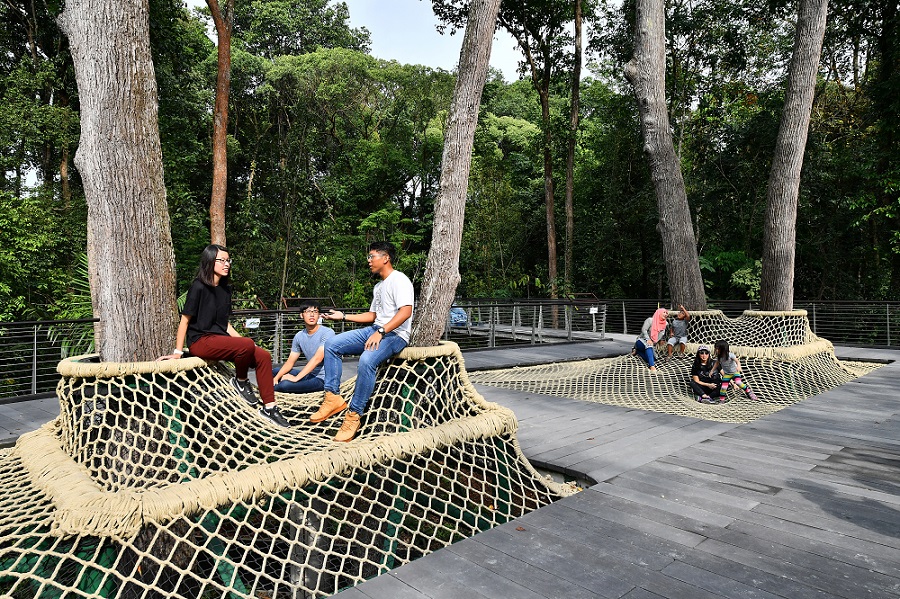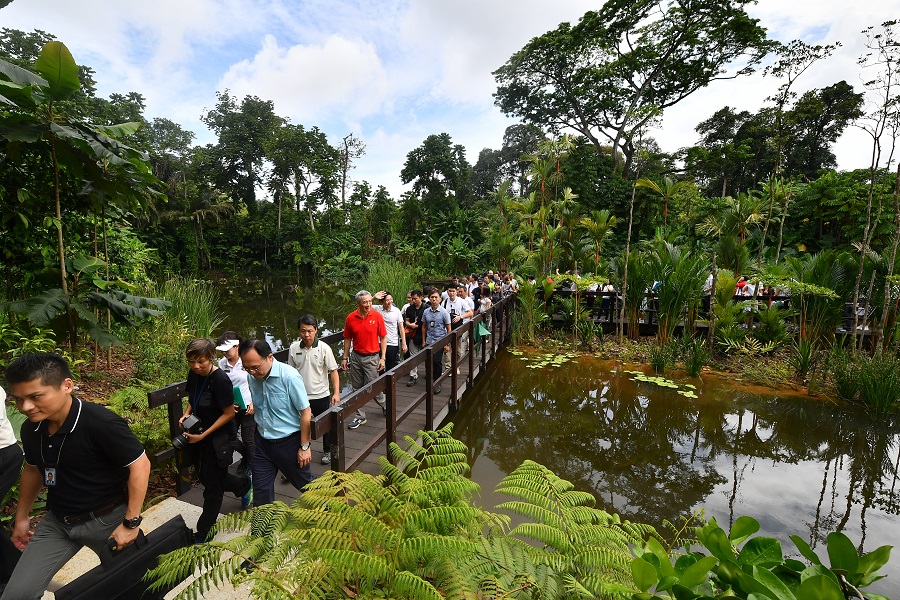5 things to see at Botanic Gardens' new $30 million Learning Forest
Sign up now: Get ST's newsletters delivered to your inbox
Melody Zaccheus
Follow topic:
A stunning 10ha forest, the size of 15 football fields, has opened at the Botanic Gardens. Once filled with dense century-old terrain, the restored and curated attraction is now accessible to the public for the first time in its history and has been divided into five sections.
Called the Learning Forest, the space is very walkable - there are hardly any steps to climb although the terrain rises gently across the parcel of land. Visitors can get around via sensitively installed walkways and elevated boardwalks.
The forest is now home to 120,000 plant species, and is a refuge for a variety of fauna native to Singapore and the region. These numbers are set to grow as the Learning Forest matures over time.
Here is a look at the highlights of each section.
1) The SPH Walk of Giants

Step onto an elevated boardwalk that will take you to a height of 8m to be among the canopy layer of century-old trees. Visitors can also lie on the installed canopy webs (or rope beds), and gaze up into the crowns of trees. Overtime, some of these trees will grow up to at least 60m in height - the equivalent of a 20-storey building.
Singapore Press Holdings partnered the Gardens by pledging $1.2 million towards the development of outreach programmes for the walk.
2) Lowland Rainforest
This section of the Learning Forest features a collection of trees with interesting barks, such as the Indian prune which has strong woody spines that have a variety of forms, from simple needle-like ones to multiple-branched ones.
3) Keppel Discovery Wetlands

The existing water source in the Learning Forest compound was restored and enhanced by creating and adding a series of five waterbodies. This has led to the introduction of a freshwater forest wetland ecosystem to the site.
This area is now home to marsh plants, orchid islands and a Botanists' Boardwalk.
The Botanists' Boardwalk showcases plants named after former directors of the Singapore Botanic Gardens. These include Corner's torch ginger, Holttum's orchids, Ridley's giant bamboo, and Burkill's Lime.
Keppel Corporation gave a donation of $2.08 million towards the establishment of this section.
4) Bambusetum

This area is as picture-worthy as any other section of the Learning Forest for it is home to a multitude of bamboo species such as the giant bamboo which can grow up to 10-storeys tall. Its stems are wide enough to be cut up and used as buckets.
Also on display is the Timorese black bamboo. Its dark green stems turn purplish-black with age.
5) Wild Fruit Tree Arboterum
While most of the fruit trees are still young, the public can eventually look forward to seeing these plants sprout fruits such as lychee, nutmeg, jackfruit and mangosteen.
Some of the fruit trees growing in the Learning Forest are naturally occuring species which tend to be hardy and resistant to diseases.

